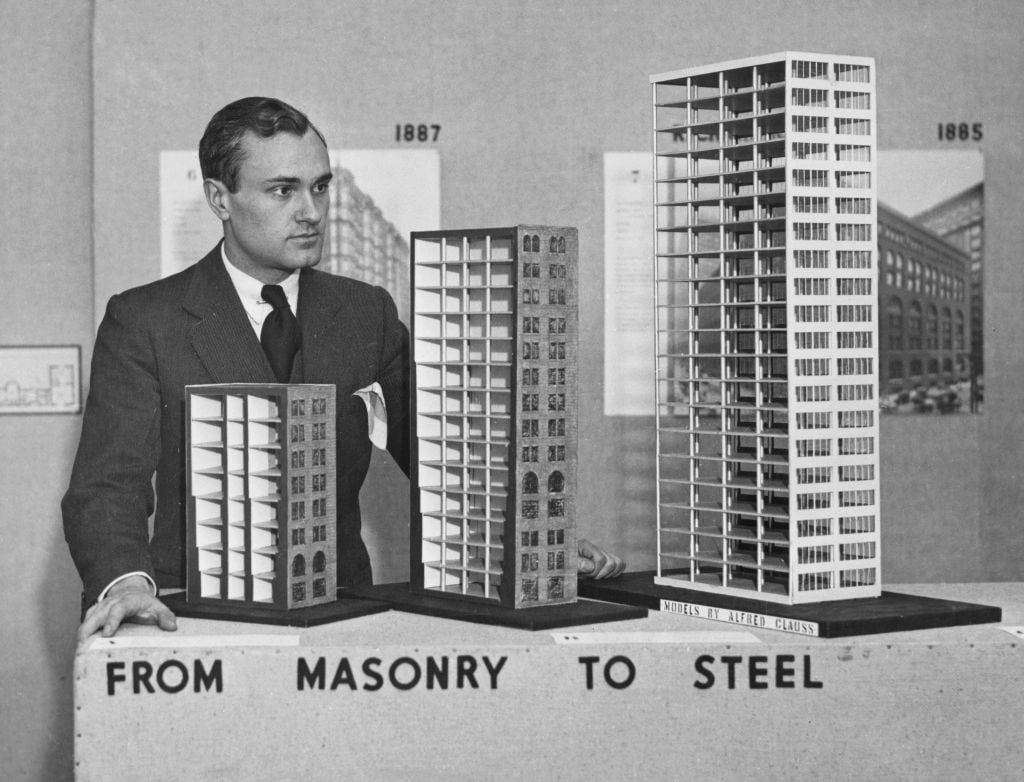
Harvard University will rename a house designed and once occupied by the modernist builder Philip Johnson after an anonymous collective of architects and artists drew attention to his white supremacist views last month.
The building, once known as the Philip Johnson Thesis House, will now be referred to only by its street address in Cambridge.
On November 27, the Johnson Study Group, as the collective is called, issued a public letter to the Museum of Modern Art (MoMA), where a gallery and a curatorial position are named for the architect, and the Harvard Graduate School of Design (GSD), urging both institutions to remove his name from titles and spaces, citing his ties to fascism.
“There is a role for Johnson’s architectural work in archives and historic preservation,” the letter read. “However, naming titles and spaces inevitably suggests that the honoree is a model for curators, administrators, students, and others who participate in these institutions.”
In the 1930s, Johnson worked with extreme right-wing groups in the US and promoted anti-Semitism and Nazism, and attempted to form a fascist political party in America.
On December 5, the dean of the GSD, Sarah M. Whiting, responded to the group’s missive with a letter of her own. “I fully agree with your strong point about the power of institutional naming, and the integrity and legitimacy it confers,” she wrote, according to the website Archinect, which published the letter in full.
“And so we are taking steps to officially recognize the house within the university as simply ‘9 Ash Street’—the house’s physical address.”
The Study Group did not immediately respond to Artnet News’s request for comment, but told Hyperallergic that MoMA has yet to acknowledge its November letter.
“The dean of the GSD has responded swiftly and acknowledged that this is a part of broader work to do. Why can’t MoMA respond in this fashion?” the group said. “It is important to note the extremity of Johnson’s activity, and the extent to which we are talking about violence and sedition in support of white supremacy.”
MoMA did not respond immediately to Artnet News’s request for comment.
The building was designed by Johnson while he was enrolled at Harvard’s Graduate School of Design in the 1940s, and would eventually form the basis of his Masters thesis. A modular structure with an entire wall of windows, it is thought to be a prototype for his famous Glass House, erected in 1948–49 in New Canaan, Connecticut. Harvard purchased the building in 2010.
“Johnson’s influence runs deep and wide, and across generations, and yet he is also just one figure among the entrenched, paradigmatic racism and white supremacy of architecture,” Whiting wrote in her letter. “Undoing that legacy—of the field, not only of Johnson—is arduous and necessary, and as a school and community we are committed to seeing it through.”